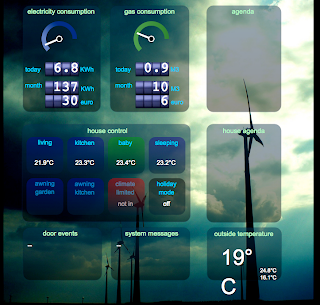Final version:
The eagle eyed among you might notice some small changes. Nothing major.
The ones really paying attention might notice the mistakes: DS18B20 is one wire, not I2C, as is indicated (cosmetics), and the silkscreen for the 12V and the 5V regulators is inverted (cosmetics with high potential for disaster). The soldering holes for the screw connectors could also be a tiny bit bigger, but that depends on the connectors used (could be problematic, as I used some big ones).
I only noticed these mistakes after the boards arrived, luckily before soldering the regulators, so no harm done!
but, following the intense design sessions, I sent it out to be manufactured by Fritzing, and the boards arrived, a bit more than a week later! Great service is all I can say. Here they are in all their glory:
And here in the box, with some components located, not soldered yet:
And finally, in the box, with the components (attiny is missing):
In the third chapter, the completed thing, with screws, micro, lid, everything! and some considerations for improvements.












